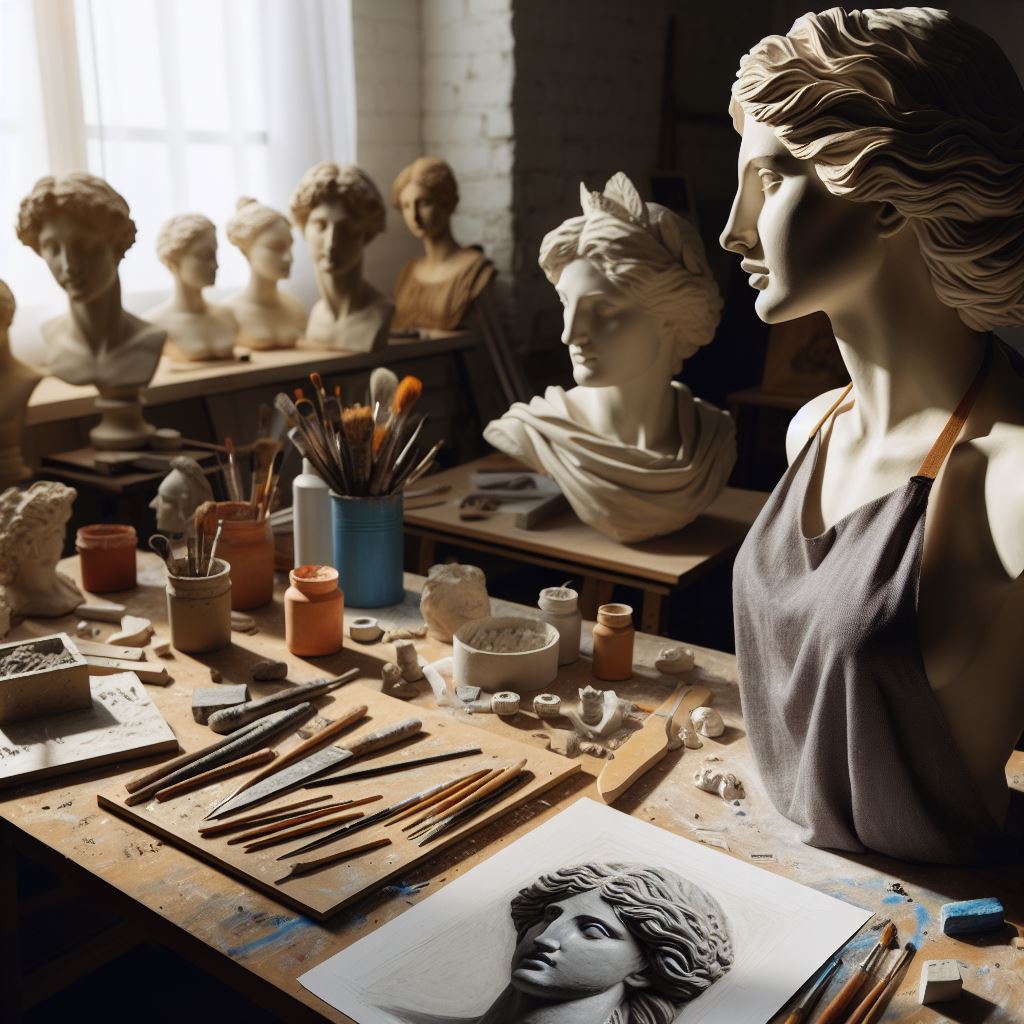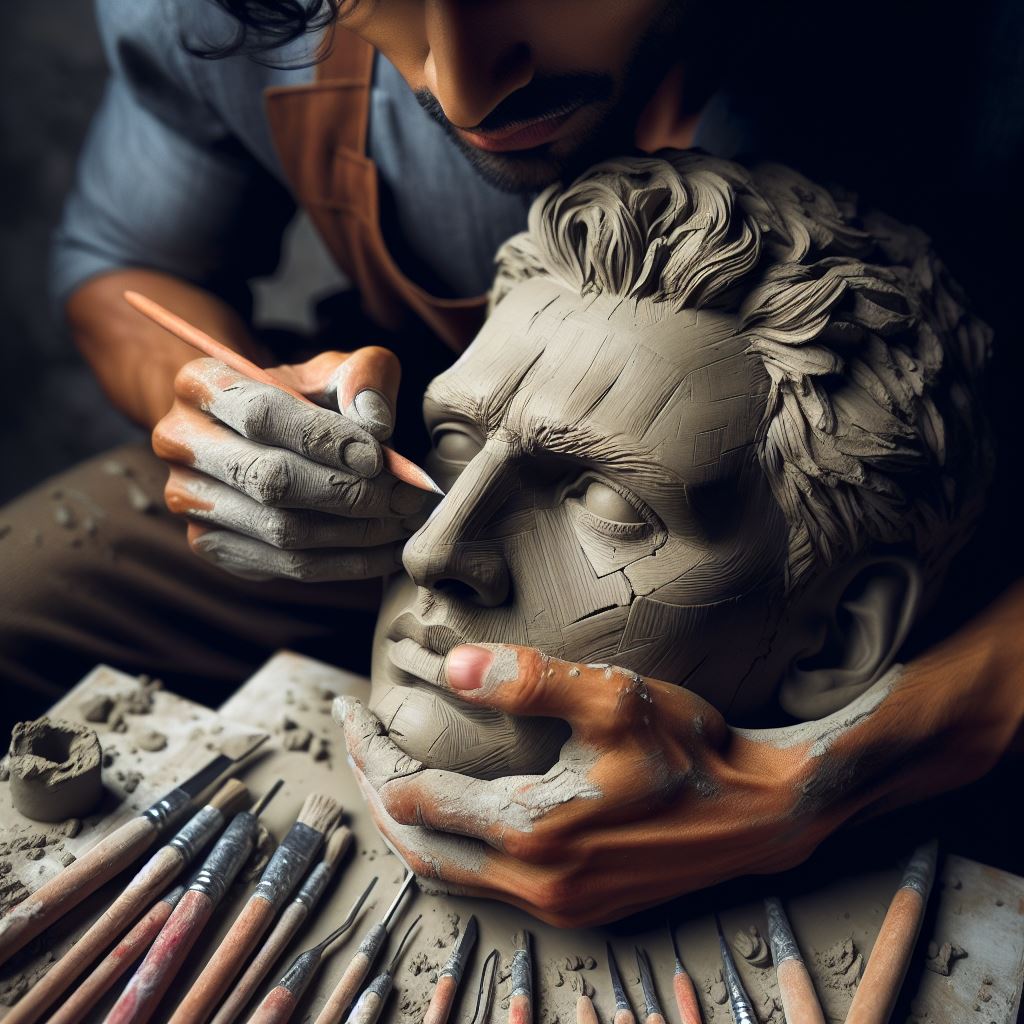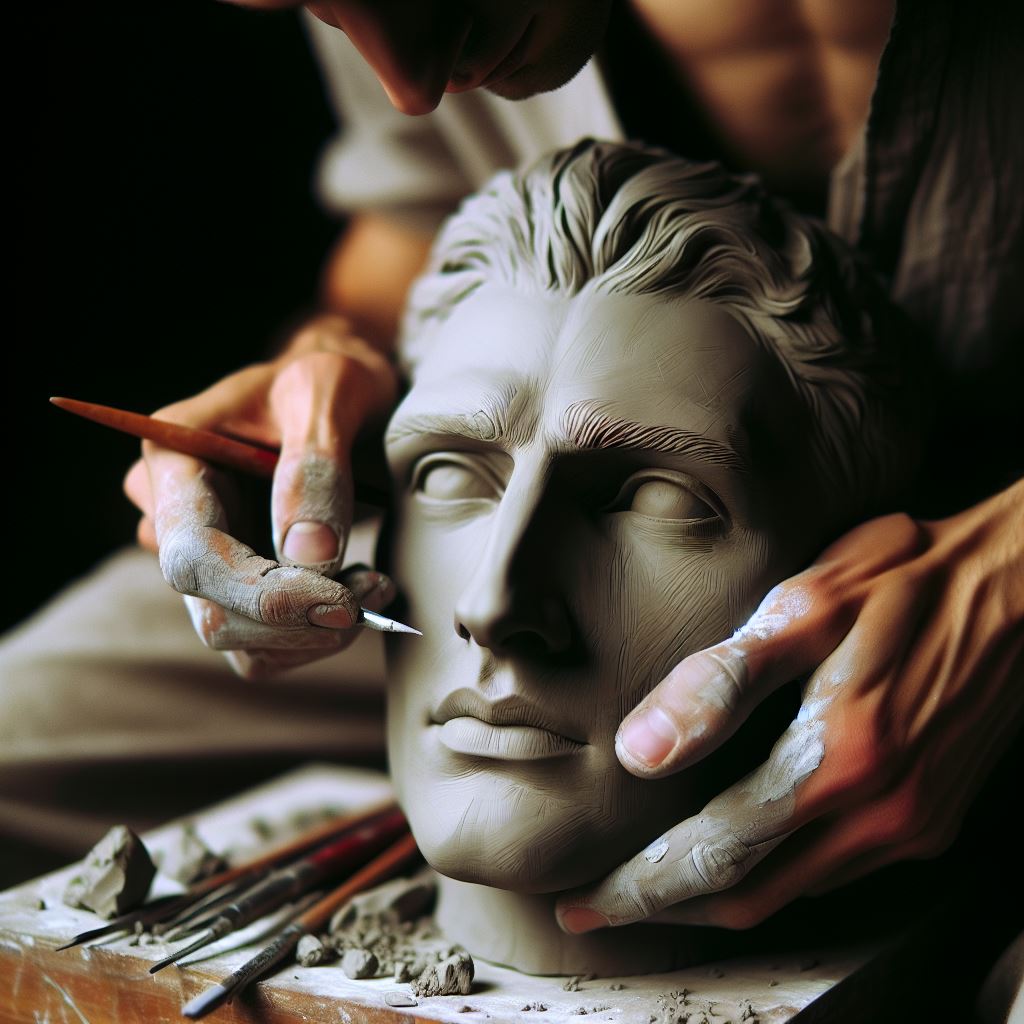Table Of Contents
- 1 Unveiling Sculpting with Casting Techniques
- 1.1 A Glimpse into the Essence of Casting
- 1.2 Casting Techniques: A Tapestry of Possibilities
- 1.3 Casting Materials: A Symphony of Form and Texture
- 1.4 Unleashing Creativity with Casting Techniques
- 1.5 Embark on Your Casting Journey
- 1.6 Defining Sculpting with Casting Techniques
- 1.7 Exploring the World of Casting Techniques
- 1.8 Sand Casting: A Versatile Approach for Diverse Materials
- 1.9 Investment Casting: Precision Sculpting for High-Quality Results
- 1.10 Lost-Wax Casting: An Ancient Legacy of Fine Detail
- 1.11 Exploring the Artistic Possibilities of Casting Techniques
- 1.12 Hybrid Techniques and Creative Expression
- 1.13 Sculpting with Casting Techniques: A Journey of Artistic Expression
- 1.14 A Tapestry of Techniques, A Symphony of Creativity
- 1.15 Embracing Experimentation, Unleashing Innovation
- 1.16 A Journey of Continuous Learning and Growth
- 1.17 Celebrating the Artistic Expression
- 1.18 Conclusions:
- 1.19 Frequently Asked Questions (FAQs):
Unveiling Sculpting with Casting Techniques

Embark on a captivating journey into the realm of sculpting with casting techniques, where creativity intertwines with craftsmanship to transform ordinary materials into extraordinary works of art. This enchanting art form has captivated artists for centuries, offering a unique and versatile medium for expressing their artistic vision.
A Glimpse into the Essence of Casting
Casting is an ancient art form that involves creating a mold from an original object and then pouring a liquid material into that mold. As the liquid material solidifies, it replicates the shape of the original object, resulting in a cast sculpture.
Casting Techniques: A Tapestry of Possibilities
The world of casting encompasses a diverse range of techniques, each with its own unique characteristics and applications. Here are a few notable casting techniques:
-
Sand Casting: A versatile technique that utilizes sand as the mold material, suitable for casting metals, glass, and other materials.
-
Investment Casting: A precision casting technique that involves creating a wax or plastic mold, which is then covered in a ceramic investment material. The wax or plastic is melted away, leaving a negative space that is filled with molten metal.
-
Lost-Wax Casting: An ancient technique that involves creating a wax or plastic model of the desired sculpture. This wax model is then covered in a ceramic investment material, which is fired to create a mold. The wax is melted away, leaving a negative space that is filled with molten metal.
Casting Materials: A Symphony of Form and Texture
A wide array of materials can be utilized for casting, each with its own unique properties and aesthetic qualities. Here are a few notable casting materials:
-
Metal: Offers durability, strength, and a range of finishes, from polished brilliance to weathered patinas.
-
Plaster: Lends itself to intricate details and textures, creating sculptures with a delicate and lightweight presence.
-
Resin: Provides versatility, allowing for casting in multiple colors and the incorporation of various elements.
Unleashing Creativity with Casting Techniques
Sculpting with casting techniques offers a boundless canvas for artistic expression. Let your imagination run wild as you explore the endless possibilities:
-
Create Delicate Figurines: Capture the essence of human figures, animals, or objects with intricate details and refined shapes.
-
Craft Complex Structures: Construct intricate architectural models, intricate sculptures, or abstract forms that showcase precision and creativity.
-
Express Abstract Concepts: Through the fluidity of molten materials, convey emotions, ideas, and abstract forms that resonate with your inner world.
-
Experiment with Combinations: Venture beyond traditional techniques by combining casting with other mediums, such as papier-mâché, found objects, or mixed media elements.
Embark on Your Casting Journey

Embrace the transformative power of sculpting with casting techniques and embark on a journey of artistic expression. With dedication, practice, and a touch of creativity, you can transform ordinary materials into extraordinary works of art that will captivate and inspire.
Defining Sculpting with Casting Techniques
Sculpting with casting techniques, also known as casting sculpture, is a fascinating art form that involves creating three-dimensional sculptures by pouring molten materials into molds. This process allows artists to capture intricate details and create sculptures that are both visually stunning and durable.
The essence of casting sculpting lies in its ability to replicate the form of an original object. This is achieved by creating a mold, which is a negative space that is precisely shaped to match the desired sculpture. Once the mold is created, molten material is poured into it, and as the material cools and solidifies, it takes on the shape of the original object.
Sculpting with casting techniques offers several advantages over other sculpting methods. One of the most significant advantages is the ability to create precise and detailed sculptures. This is because the mold ensures that the molten material takes on the exact shape of the original object, without any distortion.
Another advantage of casting sculpting is the ability to create multiple copies of a single sculpture. This is because the mold can be used multiple times, with each casting replicating the original sculpture. This makes casting sculpting a cost-effective and efficient way to produce multiple sculptures for exhibitions, sales, or personal collections.
Casting sculpting is also a versatile art form that can be used to create a wide variety of sculptures. Materials that can be cast include metals, plaster, resin, and many others. The choice of material will depend on the desired aesthetic and the desired durability of the sculpture.
Finally, casting sculpting is a safe and controlled art form. The molds are typically made from non-toxic materials, and the molten materials are typically heated to temperatures that are below the melting point of most metals. This makes casting sculpting a safe and enjoyable activity for people of all ages.
Exploring the World of Casting Techniques
The world of casting techniques is a vast and fascinating realm, offering artists a diverse range of methods to create intricate and durable sculptures. Each technique has its own unique characteristics and applications, catering to different artistic styles and desired outcomes. Let’s delve into some prominent casting techniques that have captivated artists for centuries:
Sand Casting: A Versatile Approach for Diverse Materials
Sand casting stands out as a versatile casting technique that can be employed to cast a wide array of materials, including metals, glass, and ceramics. Its simplicity and adaptability make it an approachable technique for beginners and experienced artists alike.
The process of sand casting involves creating a mold from sand, which serves as the negative space that replicates the desired sculpture. This mold can be reused multiple times, allowing for the production of multiple casts.
Investment Casting: Precision Sculpting for High-Quality Results

Investment casting is renowned for its precision and ability to create intricate details, making it a popular choice for artists seeking to produce high-quality sculptures. The technique involves creating a wax or plastic model of the desired sculpture, which is then coated in a ceramic investment material.
After the investment material has hardened, the wax or plastic model is melted away, leaving behind a negative space that is then filled with molten metal. The resulting cast sculpture boasts exceptional detail and durability.
Lost-Wax Casting: An Ancient Legacy of Fine Detail
Lost-wax casting, also known as cire-perdue, is an ancient technique that has endured for centuries, renowned for its ability to capture intricate details and produce sculptures with a mesmerizing sense of realism.
The process involves creating a wax or plastic model of the desired sculpture, which is then coated in a ceramic investment material. The wax or plastic model is then melted away, and the resulting negative space is filled with molten metal. Upon cooling, the metal solidifies within the mold, creating a cast sculpture that resembles the original model.
Exploring the Artistic Possibilities of Casting Techniques
The versatility of casting techniques extends beyond the realm of creating precise and detailed sculptures. Artists can also utilize these techniques to explore diverse artistic expressions, including:
Delicate Figurines: Capture the essence of human figures, animals, or objects with intricate details and refined shapes through casting techniques.
Complex Structures: Construct intricate architectural models, intricate sculptures, or abstract forms that showcase precision and creativity through casting techniques.
Expressive Abstractions: Through the fluidity of molten materials, convey emotions, ideas, and abstract forms that resonate with your inner world through casting techniques.
Hybrid Techniques and Creative Expression
The boundaries of casting techniques can be further expanded by experimenting with hybrid techniques, combining casting with other artistic mediums such as papier-mâché, found objects, or mixed media elements. This fusion of techniques opens up a world of creative possibilities, allowing artists to push the boundaries of their artistic expression.
If you’re ready to embark on your casting sculpting journey, here are some resources to help you get started:
- “The Art of Casting Sculptures” by Richard Bennett
- “The Lost-Wax Technique” by Charles Lewton
- “Investment Casting: A User’s Manual” by William J. Copley
Sculpting with Casting Techniques: A Journey of Artistic Expression
As we conclude our exploration of sculpting with casting techniques, we stand in awe of the transformative power of this art form. This unique blend of craftsmanship and artistry has opened doors to a world of creative expression, allowing individuals to bring their artistic visions to life through the manipulation of metals, wires, beads, and polymer clay.
A Tapestry of Techniques, A Symphony of Creativity
Sculpting with casting techniques has showcased the versatility and adaptability of jewelry-making skills. From the intricate details of delicate figurines to the bold structures of abstract sculptures, artists have demonstrated their mastery of wirework, metalsmithing, beadwork, and polymer clay sculpting.
Embracing Experimentation, Unleashing Innovation
The spirit of experimentation has been a driving force in this art form. Artists have pushed the boundaries of convention, combining techniques in unexpected ways, and exploring unconventional materials. This fearless approach has led to the creation of truly unique and captivating sculptures.
A Journey of Continuous Learning and Growth
Sculpting with casting techniques is a journey of continuous learning and self-discovery. Artists have refined their skills, honed their techniques, and expanded their artistic horizons. This ongoing process has enriched their artistic expression and allowed them to create sculptures that reflect their evolving artistry.
Celebrating the Artistic Expression
The world has witnessed the transformative power of sculpting with casting techniques. Artists have shared their creations through exhibitions, workshops, and online platforms, inspiring others to explore this art form and discover their own creative potential.
Conclusions:
Sculpting with casting techniques stands as a testament to the enduring spirit of creativity and craftsmanship. This art form has not only produced captivating sculptures but has also empowered individuals to express themselves through a unique artistic medium. As we look to the future, we can anticipate further innovations and artistic expressions that will continue to enrich the world of sculpting.
Frequently Asked Questions (FAQs):
Q: I’ve never sculpted before. Can I still participate in sculpting with casting techniques?
Absolutely! Sculpting with casting techniques is an accessible and beginner-friendly art form. The skills and techniques you’ve learned in jewelry-making can be easily adapted to sculpting.
Q: What are some specific project ideas for sculpting with casting techniques?
Here are a few ideas to get you started:
- Create a miniature figurine using wire for an armature and metal sheets for shaping.
- Construct a delicate wirework sculpture, such as a mandala or a dreamcatcher.
- Sculpt an abstract form using polymer clay, experimenting with colors, textures, and patterns.
- Combine jewelry-making techniques with papier-mâché or found objects to create a unique sculpture.
Q: Where can I find inspiration for my sculptures?
Draw inspiration from the works of other artists, explore diverse art forms, and immerse yourself in the beauty of the natural world. Let these influences spark new ideas and fuel your creative journey.
Q: How can I share my sculptures with others?
Connect with fellow artists, participate in exhibitions, and showcase your sculptures on social media platforms. Sharing your work not only allows you to connect with others but also provides valuable feedback and opportunities for growth.
Remember, sculpting with casting techniques is a journey of continuous exploration, experimentation, and artistic expression. Embrace the process, let your creativity flow, and discover the endless possibilities that this art form has to offer.